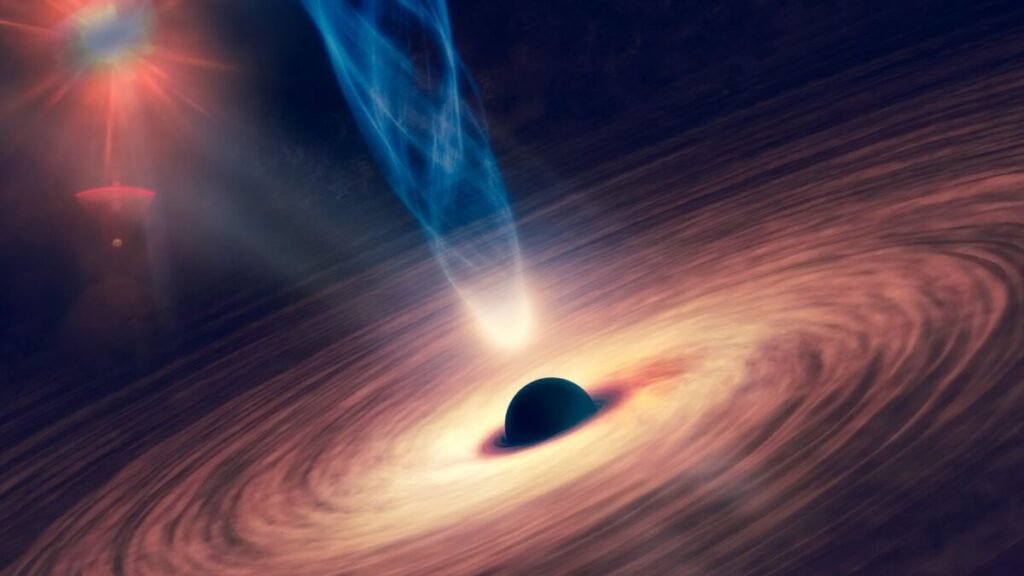A black hole is rapidly expanding, causing concern among scientists.

In the depths of the universe, billions of light-years away, a black hole is defying the laws of physics by exhibiting unprecedented growth. This unexpected discovery has puzzled astronomers, prompting a reevaluation of established boundaries in the field. The black hole, known as RACS J0320-35, is situated approximately 12.8 billion light-years from Earth and boasts a mass equivalent to a billion suns. What sets it apart is the rapid pace at which it is expanding, far surpassing the limits set by traditional theory.
Utilizing cutting-edge technology, astronomers were able to detect intense radiation emissions from RACS J0320-35. By combining data from various observations, including optical and infrared, scientists estimated the black hole’s mass and growth rate to be between 300 and 3,000 solar masses per year. Instruments such as the Australian Square Kilometer Array Pathfinder radio telescope and the Gemini-South Telescope in Chile played crucial roles in confirming the magnitude of this cosmic phenomenon.
Beyond its extraordinary growth, RACS J0320-35 is not simply a black hole – it is also classified as a quasar, an incredibly active galactic nucleus. This enigmatic entity emits particle jets at velocities nearing the speed of light, a rare occurrence that provides a unique opportunity to explore extreme conditions in the universe. Luca Ighina, the leader of the study, expressed astonishment at the black hole’s unprecedented growth rate, highlighting the importance of this discovery in advancing our understanding of the cosmos.






